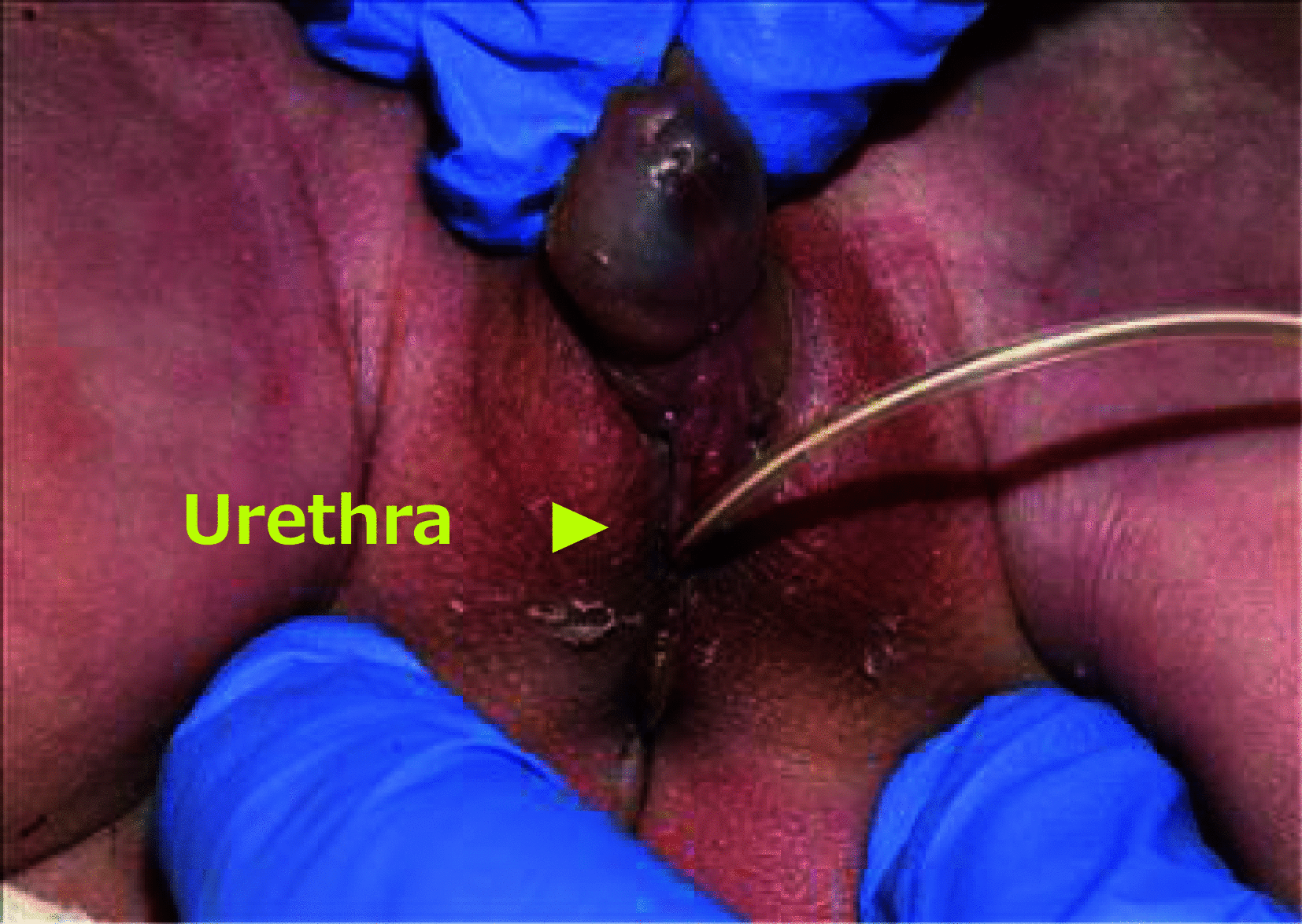A case of Potter sequence with WT1 mutation
- PMID: 36227513
- PMCID: PMC10151295
- DOI: 10.1007/s13730-022-00742-x
A case of Potter sequence with WT1 mutation
Abstract
Wilms tumor 1 (WT1) is the causative gene of Denys-Drash syndrome and Frasier syndrome, and in most cases, kidney failure develops after birth. We report an unusual case of Potter sequence due to fetal nephropathy and kidney failure with a WT1 mutation. The neonate was born at 37 weeks of gestation, and had no distinctive facial appearance or anomalies of the extremities. The external genitalia were ambiguous. Presence of a penile-like structure or hypertrophic clitoris was noted, and the urethra opened at the base of the penis or clitoris. On ultrasonographic examination, the kidney sizes were small. No kidney cysts were noted, but the kidney parenchymal luminosity was increased. Although the neonate received mechanical ventilation because of severe retractive breathing after birth, he died of poor oxygenation due to air leak syndrome at 60 h after birth. The congenital anomalies of the kidney and urinary tract (CAKUT) gene panel revealed a heterozygous missense mutation in WT1 [NM_024426.6:exon9:c.1400G > A, p.(Arg467Gln)]. In WT1, missense mutations are associated with earlier onset of nephropathy than nonsense or splicing mutations. However, severe cases of fetal onset and early neonatal death with WT1 mutations are rare, and only one severe case with the same missense mutation in WT1 has been reported. Therefore, WT1 mutation may be suspected in Potter sequence patients with external genital abnormalities, and the WT1 missense mutation in our case [NM_024426.6:exon9:c.1400G > A, p.(Arg467Gln)] may indicate a severe case with fetal onset of nephropathy and kidney failure.
Keywords: External genital abnormality; Kidney failure; Missense mutation; Potter sequence; Wilms tumor 1.
© 2022. The Author(s) under exclusive licence to The Japan Society of Nephrology.
Conflict of interest statement
The authors have no conflicts of interest to declare.
Figures





Similar articles
-
A novel WT1 heterozygous nonsense mutation (p.K248X) causing a mild and slightly progressive nephropathy in a 46,XY patient with Denys-Drash syndrome.Pediatr Nephrol. 2011 Aug;26(8):1311-5. doi: 10.1007/s00467-011-1847-4. Epub 2011 May 11. Pediatr Nephrol. 2011. PMID: 21559934
-
Prophylactic bilateral nephrectomy and preemptive kidney transplantation for Denys-Drash syndrome prior to development of kidney failure.Pediatr Nephrol. 2024 Mar;39(3):905-909. doi: 10.1007/s00467-023-06113-7. Epub 2023 Aug 12. Pediatr Nephrol. 2024. PMID: 37572117
-
Effects of Denys-Drash syndrome point mutations on the DNA binding activity of the Wilms' tumor suppressor protein WT1.Biochemistry. 1996 Sep 17;35(37):12070-6. doi: 10.1021/bi960758o. Biochemistry. 1996. PMID: 8810912
-
An unusual phenotype of Frasier syndrome due to IVS9 +4C>T mutation in the WT1 gene: predominantly male ambiguous genitalia and absence of gonadal dysgenesis.J Clin Endocrinol Metab. 2002 Jun;87(6):2500-5. doi: 10.1210/jcem.87.6.8521. J Clin Endocrinol Metab. 2002. PMID: 12050205 Review.
-
WT1 complete gonadal dysgenesis with membranoproliferative glomerulonephritis: case series and literature review.Pediatr Nephrol. 2022 Oct;37(10):2369-2374. doi: 10.1007/s00467-022-05421-8. Epub 2022 Feb 24. Pediatr Nephrol. 2022. PMID: 35211794 Free PMC article. Review.
Cited by
-
Pathophysiology of Congenital Anomalies of the Kidney and Urinary Tract: A Comprehensive Review.Cells. 2024 Nov 11;13(22):1866. doi: 10.3390/cells13221866. Cells. 2024. PMID: 39594614 Free PMC article. Review.
-
A review of the genetic background in complicated WT1-related disorders.Clin Exp Nephrol. 2025 Jan;29(1):1-9. doi: 10.1007/s10157-024-02539-x. Epub 2024 Jul 13. Clin Exp Nephrol. 2025. PMID: 39002031 Free PMC article. Review.
References
-
- Pelletier J, Bruening W, Kashtan CE, Mauer SM, Manivel JC, Striegel JE, Houghton DC, Junien C, Habib R, Fouser L. Germline mutations in the Wilms’ tumor suppressor gene are associated with abnormal urogenital development in Denys-Drash syndrome. Cell. 1991;67:437–447. doi: 10.1016/0092-8674(91)90194-4. - DOI - PubMed
-
- Lehnhardt A, Karnatz C, Ahlenstiel-Grunow T, Benz K, Benz MR, Budde K, Buscher AK, Fehr T, Feldkotter M, Graf N, Hocker B, Jungraithmay T, Klaus G, Koehler B, Konard M, Kranz B, Montoya CR, Muller D, Neuhaus T, Oh J, Pape L, Pohl M, Royer-Pokora B, Querfeld U, Schnwppenheim R, Staude H, Sparta G, Timmermann K, Wilkening F, Wygoda S, Bergmann C, Kemper MJ. Clinical and molecular characterization of patients with heterozygous mutations in Wilms tumor suppressor gene 1. Clin J Am Soc Nephrol. 2015;10:825–831. doi: 10.2215/CJN.10141014. - DOI - PMC - PubMed
Publication types
MeSH terms
Substances
LinkOut - more resources
Full Text Sources
Medical

